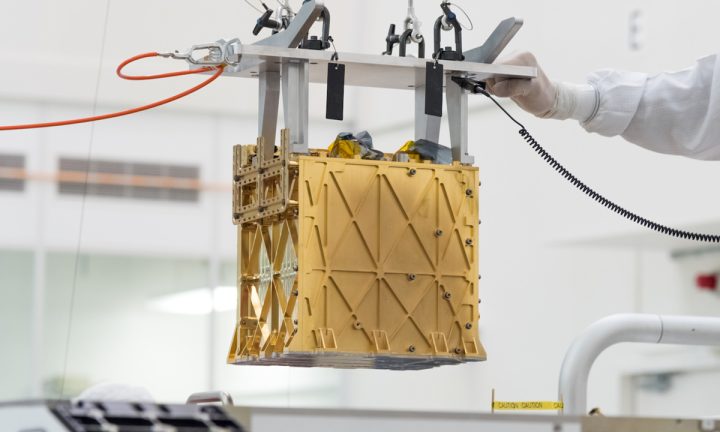The Mars Oxygen In-Situ Resource Utilization Experiment, commonly referred to as MOXIE, has achieved a remarkable feat by producing a substantial 122 grams of oxygen, a quantity sufficient for sustaining a small dog’s breathing for approximately 10 hours.. This compact device, roughly the size of a microwave, possesses an extraordinary capability: it can convert the tenuous and inhospitable Martian atmosphere into vital, life-sustaining oxygen.
What is MOXIE?
MOXIE, an acronym that stands for the Mars Oxygen In-Situ Resource Utilization Experiment, is a marvel of engineering innovation. In Situ Resource Utilization, a term that encapsulates the idea of harnessing local resources rather than relying solely on shipments from Earth. In simpler terms, it’s the concept of “living off the land” on Mars.
Since the moment Percy, the Mars Perseverance rover, touched down on the Martian surface, MOXIE has been operating flawlessly. To date, it has generated a remarkable 122 grams of oxygen, averaging an impressive rate of 12 grams per hour. This achievement is more than double NASA’s initial goal for MOXIE, and the oxygen produced boasts an impressive purity level of 98% or better.
MOXIE: Paving the Way for Human Exploration
The success of MOXIE is not just a technical feat; it’s a significant leap toward realizing the dream of human exploration on Mars. The key to MOXIE’s operation lies in its electrochemical process, which effectively splits carbon dioxide molecules into oxygen and carbon monoxide molecules. Throughout this process, the system continuously analyzes the gases to ensure the produced oxygen’s quality and quantity meet the required standards.
Revolutionizing Mars Exploration with In-Situ Resource Utilization
One of the most exciting aspects of MOXIE is its embodiment of the concept of in-situ resource utilization. Instead of relying on Earth for essential resources, MOXIE enables astronauts to manufacture oxygen and fuel right on the Martian surface. This approach not only reduces the need to transport vast quantities of supplies from Earth but also makes long-term human presence on Mars more sustainable.
MOXIE is more than just an experiment; it’s a beacon of hope for human exploration of Mars. With its ability to produce oxygen from Martian air, MOXIE is paving the way for a future where astronauts can sustain themselves on the Red Planet, turning a once-distant dream into a tangible reality. As we continue to push the boundaries of space exploration, MOXIE stands as a testament to human ingenuity and our unwavering determination to explore the cosmos.
Key takeaways for competitive examinations
- Principal Investigator of MOXIE: Michael Hecht
- Deputy Administrator of NASA : Pam Melroy




 Which Indian City is Known as the Footwe...
Which Indian City is Known as the Footwe...
 Which Desert is known as the Cold Desert...
Which Desert is known as the Cold Desert...
 Top-10 News Media Companies in the World...
Top-10 News Media Companies in the World...







